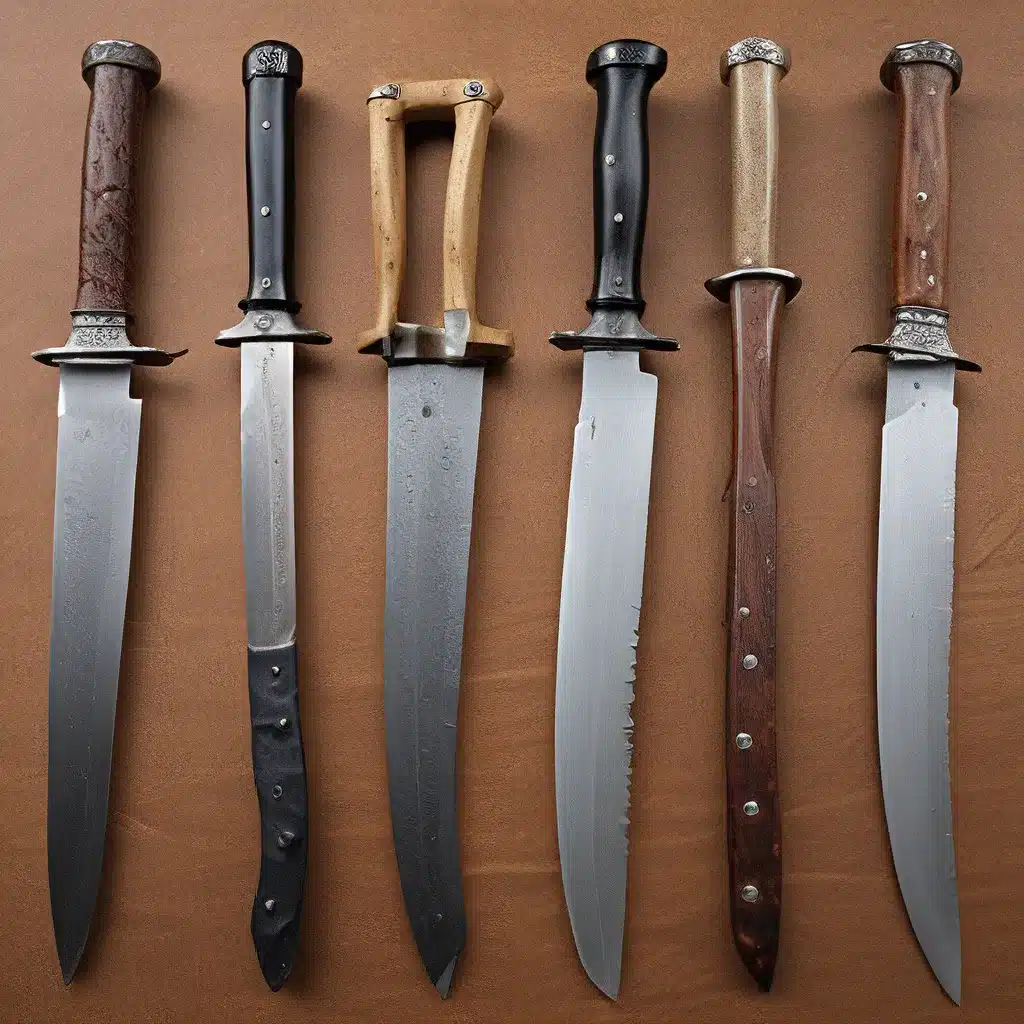
Ah, the humble knife – a tool that has been with us for millennia, evolving and adapting to the changing needs of humanity. As a self-proclaimed knife enthusiast, I simply can’t get enough of tracing the fascinating history of these versatile blades. From the primitive jackknives of ancient Europe to the high-tech tactical folders of today, the story of the pocket knife is one filled with remarkable innovation, cultural influence, and even a touch of intrigue.
The Roots of the Pocket Knife
Let’s start at the very beginning, shall we? The earliest known precursors to the modern pocket knife can be traced back to the Germanic regions of Europe, where jackknives – essentially a simple handled blade attached via a hinge – were said to have originated between 600 and 500 BCE. These were undoubtedly primitive affairs, but they laid the groundwork for the folding knives that would come to dominate the scene.
As the Roman Empire rose to power, so too did the quality and design of these folding knives. Archaeologists have uncovered examples of ornate friction folders from as early as 43 CE, featuring blades made from metals like copper, iron, and steel. The Vikings, not to be outdone, developed their own version of the swiveling friction folder around the 8th to 11th centuries, with iron blades and carved bone handles.
The Slipjoint Revolution
But perhaps one of the most significant advancements in pocket knife history came in the mid-1600s, when the slipjoint mechanism was invented in England. This clever little spring-loaded system allowed the blade to lock firmly into an open position, making the knife both safer and more stable to use. Simon Moore, author of ‘Penknives and Other Folding Knives,’ notes that the slipjoint was a “titanic influence on pocket knives and a major part of their advancement.”
Slipjoint folding knives quickly became a favorite tool among scholars and authors, who prized them for their usefulness in sharpening and maintaining their quill pens. But, as tends to happen, these handy blades also found their way into the hands of less savory characters. James Loriega’s book ‘Sevillian Steel’ notes that the navaja, a popular Spanish slipjoint knife, was a favorite weapon of bandits and thieves during the rule of King Ferdinand VII.
The Rise of the Iconic Brands
As the centuries rolled on, the pocket knife continued to evolve, with distinct regional styles and designs emerging around the world. But two companies, in particular, would go on to shape the industry in a profound way: Victorinox and Opinel.
Victorinox, founded in 1884 by Karl Elsener, gained fame for its iconic Swiss Army Knife, which became a worldwide sensation after World War II when American soldiers brought them home as souvenirs. Meanwhile, Opinel, founded in 1890 by Joseph Opinel, revolutionized the industry with its ingenious Virobloc rotating ring-lock system, which made their knives safer and more stable.
These two family-owned companies, despite their vastly different paths, have left an indelible mark on the pocket knife world. Their continued success and relevance, even in the face of changing trends and technological advancements, is a testament to the enduring appeal of these versatile blades.
The American Influence
Of course, the pocket knife’s story wouldn’t be complete without a nod to the American pioneers who have helped shape the industry. Companies like Camillus, Buck Knives, Benchmade, Gerber, Spyderco, CRKT, and WR Case & Sons Cutlery Co. have all contributed their own unique innovations and designs to the ever-evolving world of pocket knives.
From the Camillus folding knife-spoon made for the Red Cross during World War I, to the iconic Buck Model 110 Folding Hunter, these American brands have left an indelible mark on the industry. And with the rise of specialist knife makers like Bob Terzuola, who literally wrote the book on tactical folding knives, the US has proven itself to be a hotbed of pocket knife innovation and craftsmanship.
The Endless Possibilities
As I reflect on the rich history of the pocket knife, I can’t help but be in awe of the sheer breadth of styles, materials, and technologies that have emerged over the centuries. From the culturally distinct Higonokami of Japan to the Douk-Douk of France and the Stilleto of Italy, the pocket knife has become a canvas for creative expression and cultural identity.
And the possibilities continue to expand, with custom knife makers and designers constantly pushing the boundaries of what’s possible. Whether you’re in the market for a simple camping knife or the most advanced tactical folder on the market, the world of pocket knives has something to offer everyone.
So, the next time you slip a trusty blade into your pocket, take a moment to appreciate the rich history and innovation that has led to that very moment. The humble pocket knife may be a tool, but it’s also a testament to the ingenuity and creativity of the human spirit. And who knows what the future may hold for these remarkable blades? The journey continues, and I, for one, can’t wait to see what comes next.


